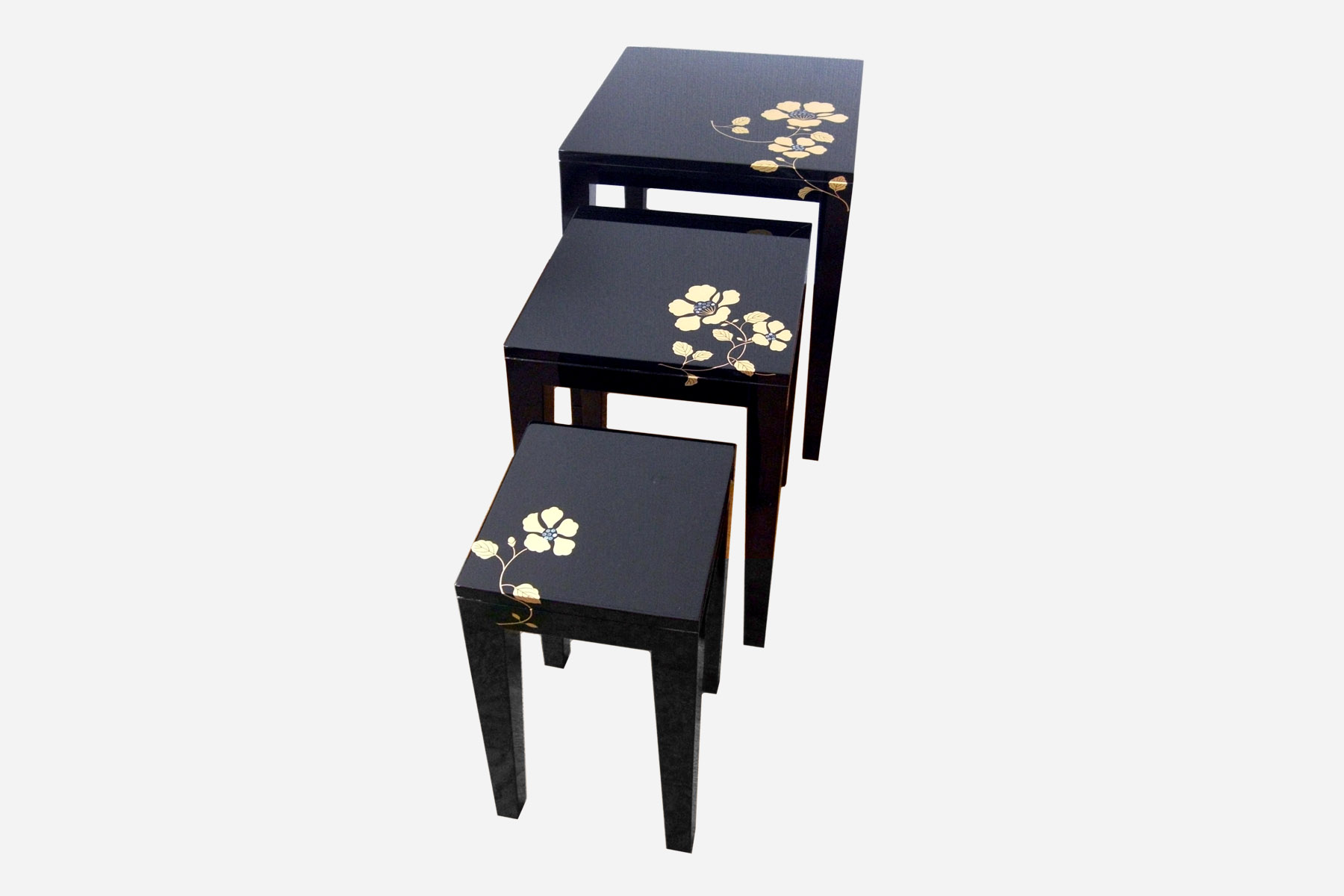Nesting Tables

A three-piece nesting table set in black. You can shift their form and function: arrange them in order brilliantly or store them in a compact form when not in use.
The pattern drawn using maki-e and mother-of-pearl on the black surface is the cotton rose, a symbol of transient beauty. Japan’s traditional arts culture includes the inscription of patterns that draw their meaning from the properties of the objects they depict.
| Title | Nesting Tables |
|---|---|
| Date | 2009.04 |
| Theme | Table / furniture |
| Techniques | Woodworking, finishing, maki-e, raden |
| Materials | Natural wood, MDF, cashew finish, gold powder, mother-of-pearl, varnish |
| Size | L width: 378mm; height: 600mm; depth: 378mm M width: 300mm; height: 528mm; depth: 300mm S width: 208mm; height: 460mm; depth: 208mm |
Integrated traditional materials and techniques
Simple store-bought wood is used with a cashew finish. The maki-e and raden use gold powder to produce a matte maki-e that is then treated with a varnish to prevent peeling.
To cut down on price, INOUE can develop items with reduced production costs by adding ornamentation and paint to store-bought materials.
Woodworking
Working with unfinished wood is an important initial process for creating the foundation or frame of a product.
Woodworking at INOUE is based on the exacting quality found in the traditional arts that have been cultivated by the production of Buddhist altars in the castle town of Hikone since the Edo Period (1603-1868 CE). Craftsmen produced these altars by hand and without nails, demanding uncompromising quality in the careful selection of the best materials for use in mortise and tenon construction. These altars are durable enough to be handed down through many generations. Furthermore, we have connections with woodworking shops in other areas that specialize in mass production, allowing us to select the appropriate methods of woodworking for any project.Maki-e
Maki-e is an artistic lacquer technique that involves drawing pictures or patterns using lacquer and then sprinkling them with gold dust or other fine powders. Maki-e originates in Japan and is one of the unique traditional techniques developed here. Maki-e includes many subsidiary techniques, such as hiramakie, takamakie, and togidashimakie. Furthermore, maki-e includes a wide variety of different end products, such as the expression of depth through different types or sizes of gold powder and the application of a variety of processing techniques.
At INOUE, we have built a network of maki-e craftsmen with a wide range of skills, allowing us to provide the skills needed for any project, from projects demanding the utmost quality to those needing to fit into a tight budget.Finishes (cashew, urethane, etc.)
At INOUE, the quality of our finishes is consistently and carefully scrutinized with a watchful eye. From sophisticated traditional techniques such as base coats of natural lacquer to cashew finishes made with the natural resin of the cashew tree, also a member of the lacquer family, to urethane finishes made with synthetic resins, we provide a wide variety of finishing techniques.
Given our extensive network of craftsmen with unparalleled technical skill, we can fulfill requests for finishes of nearly any kind.